Connecting to Slack
Learn how to seamlessly integrate Castle with Slack to receive real-time notifications, keeping your team informed and proactive with automated alerts and enhanced monitoring.
Castle can send notifications to Slack channels whenever items are added to a List via a Policy. This enables your team to receive real-time notifications whenever a specified condition is met. These notifications can be based on any type of entity, such as User, IP, or email domain. Slack notifications are an excellent way to monitor the impact of Policies before deciding to take action, for instance, to highlight users sharing accounts.
Note: For more information on Castle’s Terms of Use and Privacy Policy, please visit the Castle Trust Center
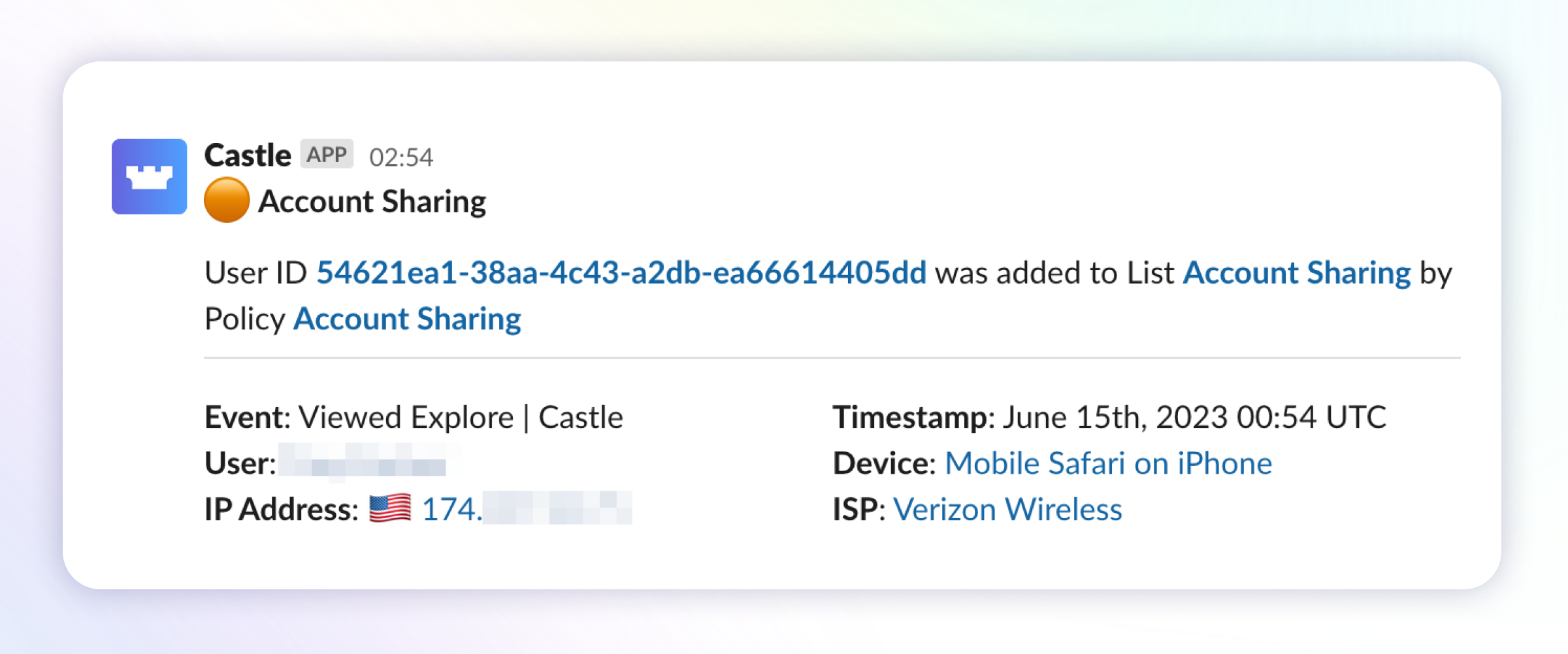
Example Slack notification
Setup
To set up the Castle app for Slack you need to be an admin in your Slack organization.
The first time you click the Slack button, Castle will prompt you to configure the Castle app for Slack.
Go to the List management page and click the Slack button near a list:
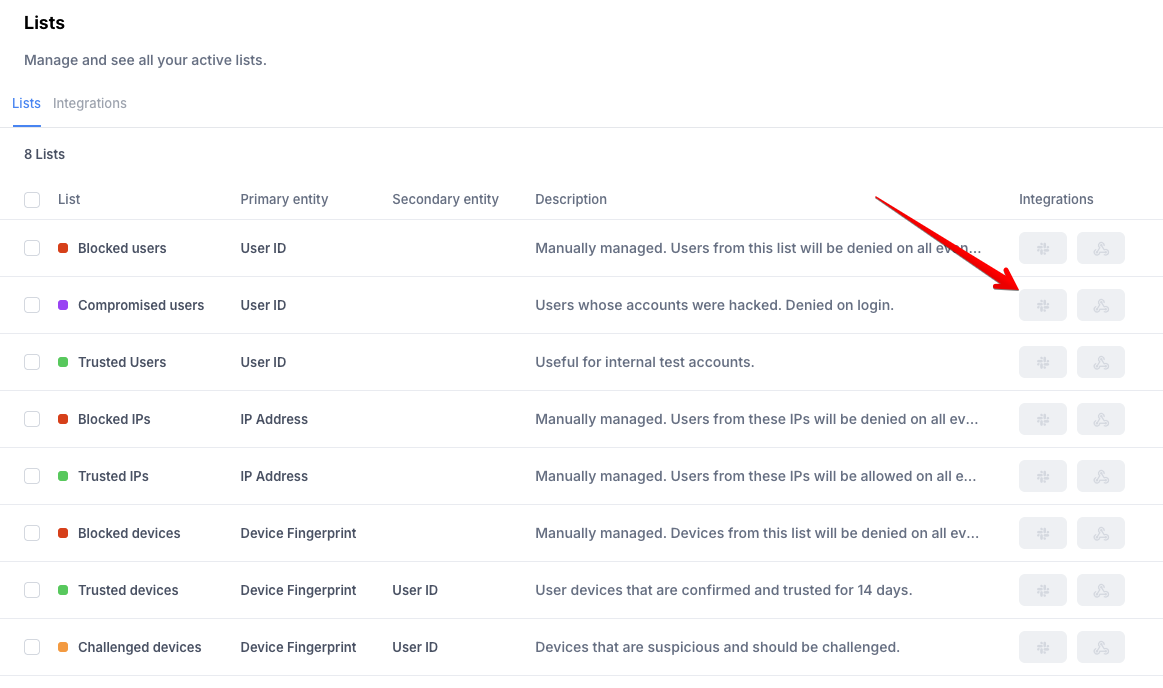
Configuration of the Castle app for Slack is triggered the first time an alert is set up
Enable Slack alerts
To enable Slack alerts for a specific list, simply click the Slack button and select the desired channel from the drop-down menu. You can configure multiple integrations per list.
Slack notifications are only dispatched when items are added to a List via Policy automation. If you add items manually, this will not trigger a notification
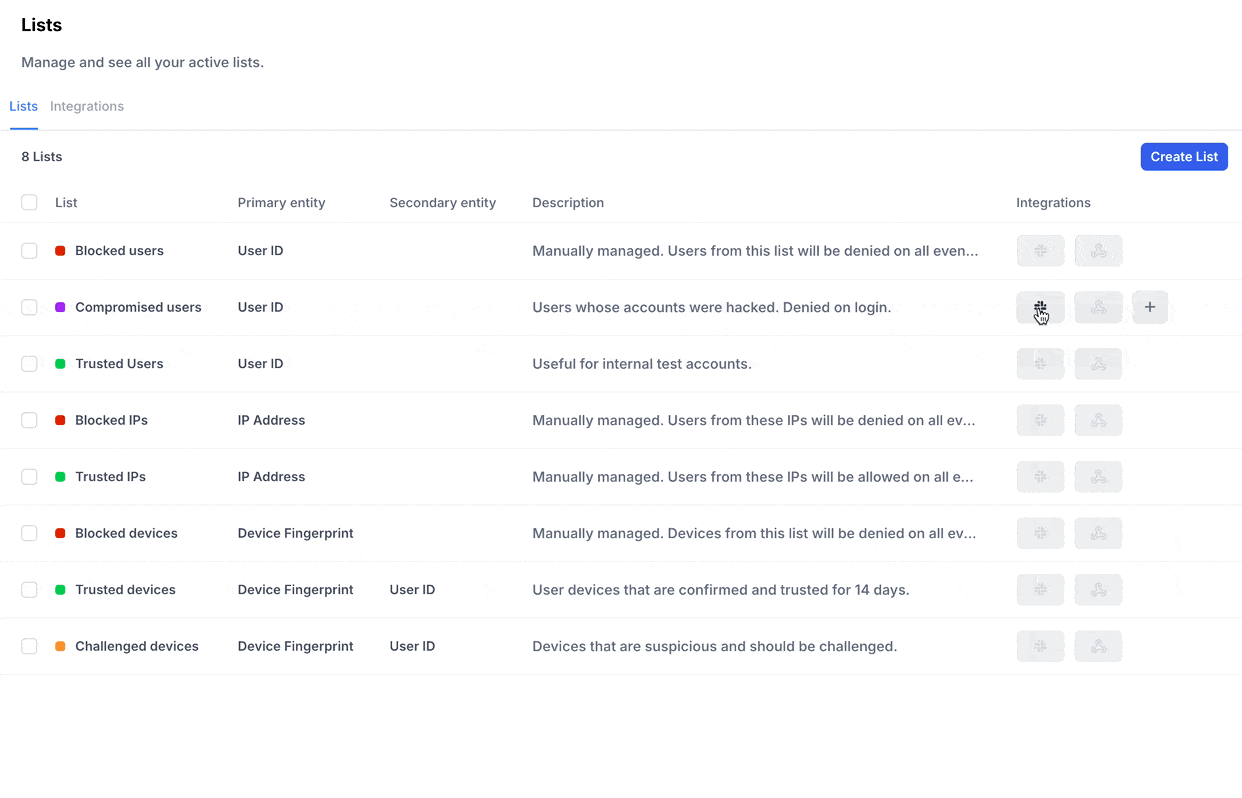
Setting up a Slack notification
Remove Slack alerts
To remove an existing Slack alert, click the cross icon next to the channel name:
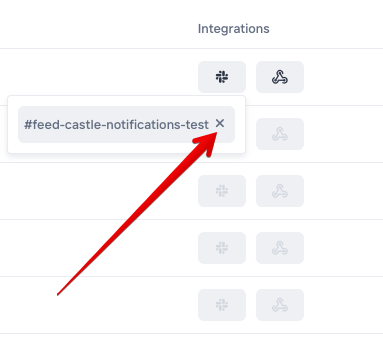
Removing a Slack alert
Notifications on private channels
Slack limits app access to public channels only. To send notifications to a private channel, you need to invite the Castle app to the private channel you want to use:
-
Open the private channel you want to send notifications to, e.g.,
#castle-private. -
Click the channel name:

-
Select the Integrations tab, then click Add in the "Apps" section:
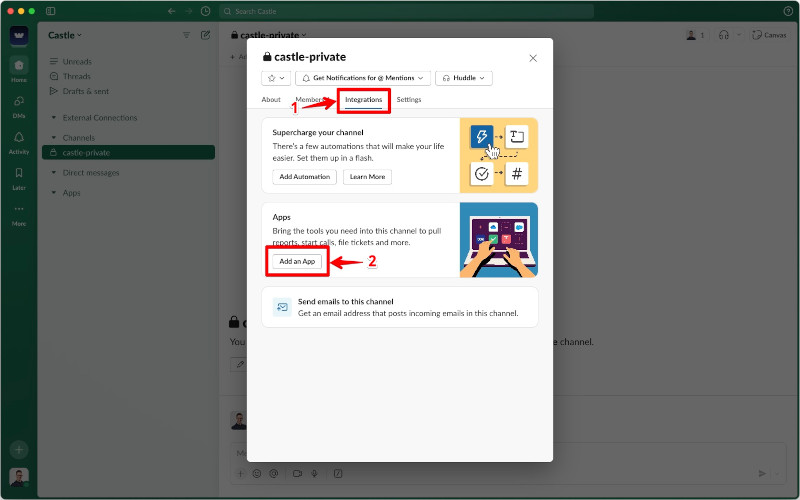
-
Filter for "Castle" and click the Add button:

Now you can create a Slack alert using custom channel name:
-
Open a List you want to add a Slack notification to, and click the Slack icon in the top right corner.
-
Click Search for channels and select Manually enter:
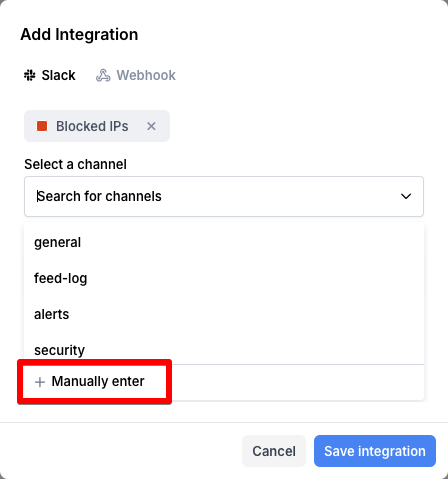
-
Type in the channel name and click Add private channel:
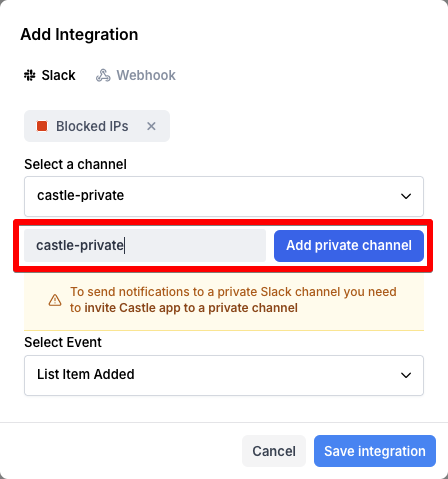
Sending a test notification
-
Configure and set up Slack alerts for the "Blocked users" list by following the previous steps.
-
In your sandbox environment, create a new Policy with the following settings:
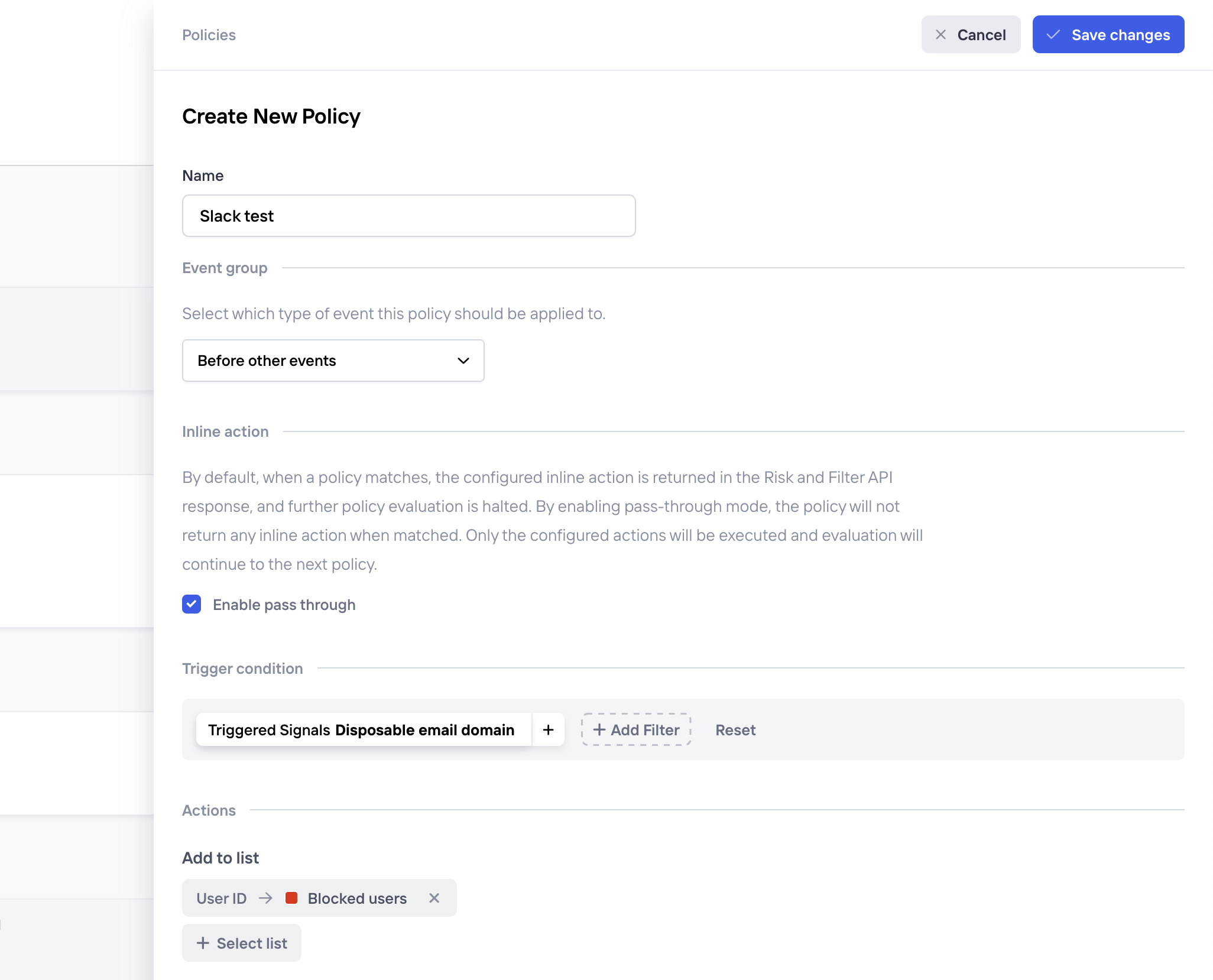
-
Once created, enable the policy by clicking the toggle button to the right side on the entry.
-
Follow the 5 minute quickstart guide to send a test event from your browser. Make sure you use the exact same user details in order to trigger the signal for disposable e-mail domains.
-
Navigate to the "Blocked users" list, and see that there is a new entry based on the event that you just sent. This means that a Slack alert has been sent to the channel you configured while setting them up.
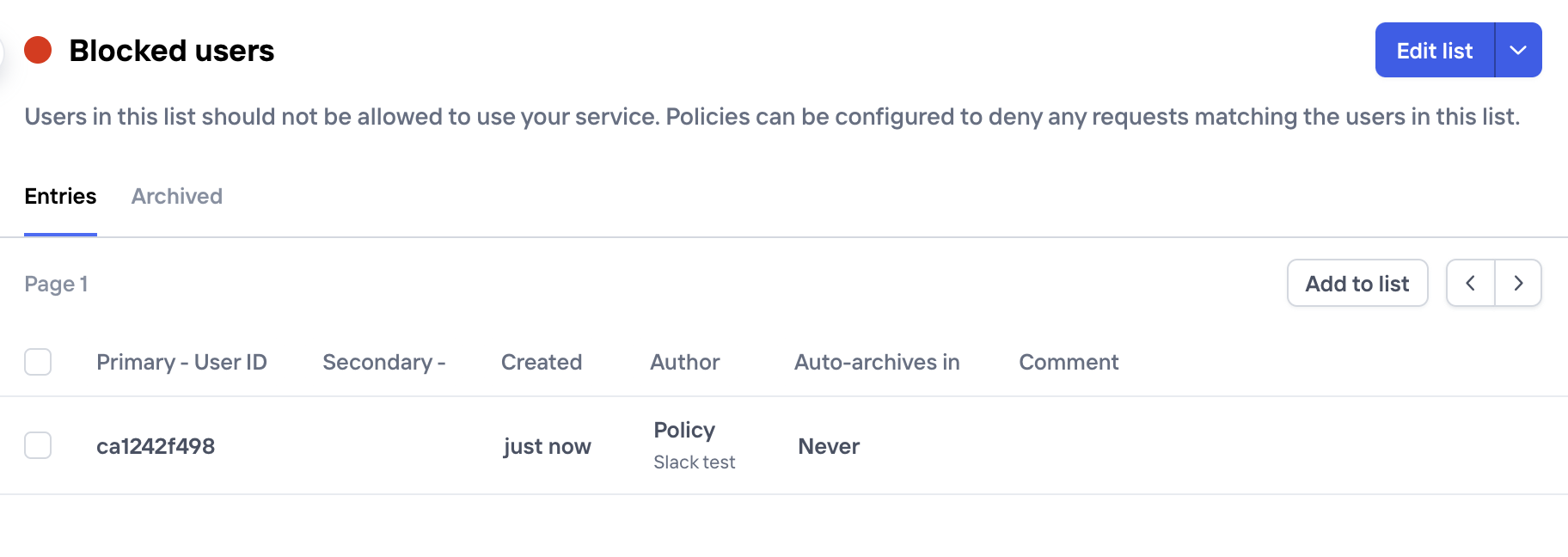
-
If you need to send another test notification, you can trigger the page view again, but with a different disposable email, such as
[email protected]
Updated 1 day ago